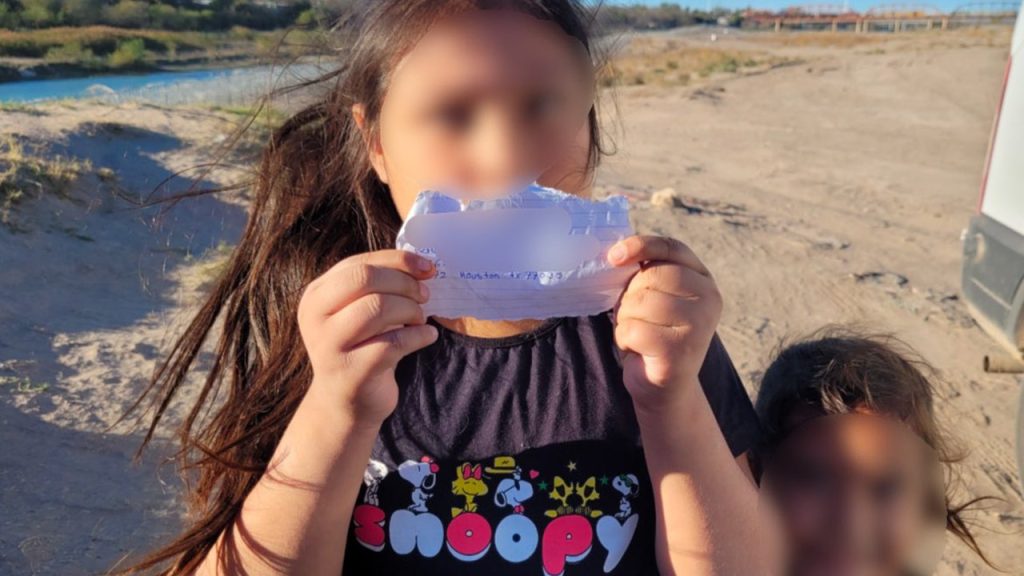The discovery of two young sisters, aged five and nine, abandoned by smugglers near the Texas-Mexico border highlights the persistent and deeply concerning issue of unaccompanied migrant children navigating the perilous journey to the United States. Left with nothing but a note containing an address and phone number, these El Salvadoran girls represent a vulnerable population caught within the complexities of immigration, human trafficking, and the ongoing border crisis. Their story underscores the desperate measures families take in seeking a better life, often entrusting their children to unscrupulous individuals who exploit their vulnerability. This case also raises serious questions about the effectiveness of current border security measures and the potential dangers faced by unaccompanied minors.
The plight of these two girls is unfortunately not an isolated incident. Reports of abandoned children, often carrying contact information scribbled on scraps of paper or sewn into their clothing, continue to emerge. These children, fleeing violence, poverty, or other hardships in their home countries, become pawns in the hands of smugglers who prioritize profit over their safety and well-being. The physical and emotional trauma experienced by these young migrants is immeasurable, leaving lasting scars and highlighting the urgent need for comprehensive solutions that address the root causes of migration and protect vulnerable children.
The increasing number of unaccompanied minors arriving at the southern border presents a significant challenge for U.S. authorities. While the Department of Health and Human Services (HHS) is responsible for the care and placement of these children with sponsors within the United States, the system is often overwhelmed, leading to delays and potential risks for the children. The recent report from the Department of Homeland Security’s Office of Inspector General (OIG) revealed a startling statistic: over 32,000 unaccompanied migrant children have failed to appear for their immigration court hearings over the past five years. This raises concerns about the children’s whereabouts, their vulnerability to exploitation, and the potential strain on immigration enforcement resources.
The OIG report further revealed that Immigration and Customs Enforcement (ICE) has struggled to track the location and status of unaccompanied minors released from HHS custody. This lack of accountability raises serious questions about the effectiveness of current monitoring systems and the potential risks to both the children and the public. The fact that approximately 291,000 unaccompanied children have not yet been scheduled for removal proceedings due to administrative failures within ICE further complicates the situation. This backlog creates uncertainty and prolongs the already difficult journey for these young migrants.
The complexities of the immigration system, coupled with the increasing number of unaccompanied minors arriving at the border, necessitate a multi-faceted approach to address the crisis. Improving border security measures, combating human trafficking networks, and addressing the root causes of migration in source countries are crucial steps. Furthermore, strengthening collaboration between government agencies, including HHS and ICE, is essential to ensure the safety and well-being of these vulnerable children. Enhanced tracking and monitoring systems, along with streamlined immigration processing, can help prevent children from falling through the cracks and ensure they receive the necessary support and resources.
The story of the two abandoned sisters serves as a poignant reminder of the human cost of the ongoing border crisis. Their vulnerability underscores the urgent need for comprehensive and humane solutions that prioritize the safety and well-being of unaccompanied migrant children. Addressing this complex issue requires a collaborative effort involving governments, non-governmental organizations, and communities to protect these children and provide them with hope for a better future. The international community must work together to create a safe and supportive environment for these young migrants, ensuring their rights are respected and their futures secured. The time for action is now, to prevent further tragedies and ensure that no child is left abandoned and alone in a foreign land.

